Hong Kong International Airport ( Chinese:香港国际机场 ) is located at Chek Lap Kok, Lantau Island, Hong Kong, China, 34 kilometers away from downtown Hong Kong. The Hong Kong–Zhuhai–Macau Bridge passes by the airport. It is one of the busiest airports in the world, with more than 100 airlines operating here. Because it is very close to Hong Kong Port, it has occupied the world’s first place in terms of cargo volume for 18 consecutive years.
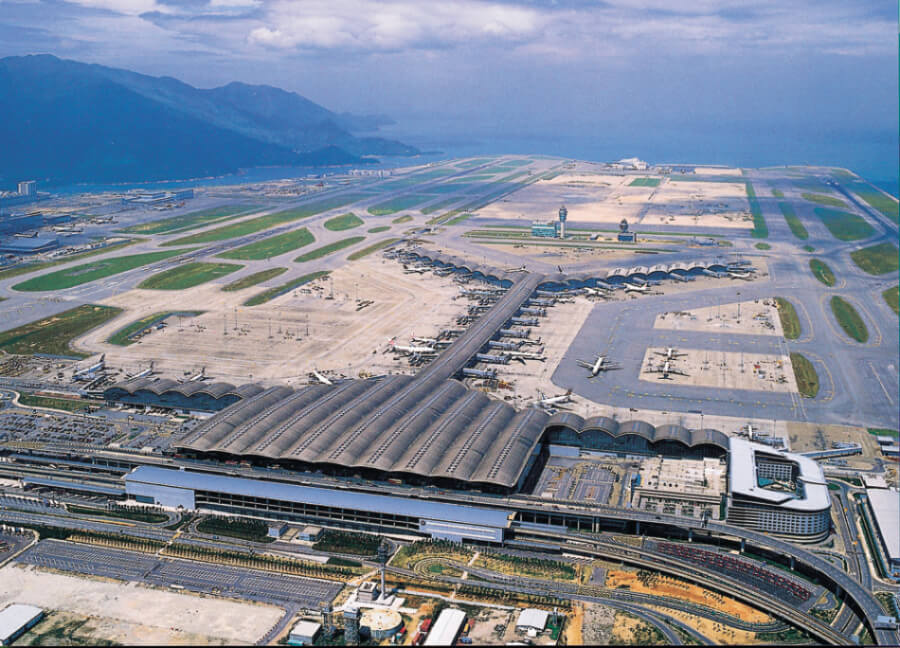
The Hong Kong International Airport was officially opened for navigation on July 6, 1998 and was named Hong Kong International Airport. It has two terminal buildings with a total of 2 runways with a runway length of 3800 meters; 182 parking bays; and more than 220 navigable cities.
In 2018, the passenger throughput of Hong Kong International Airport was 74.672 million. The cargo and mail throughput was 5.121 million tons. There were 427,700 takeoffs and landings.
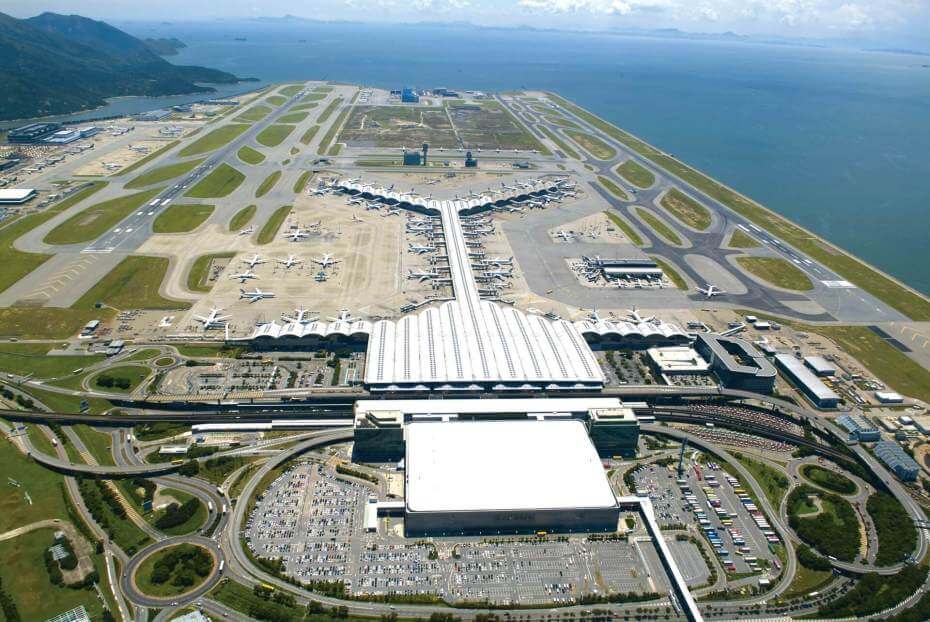
History
- October 11, 1989: the British Governor of Hong Kong, Sir David Wilson, announced a plan to build a new airport at Chek Lap Kok.
- December 21, 1993: the construction of the new airport began, and the construction site development project was extended to Lam Chau.
- June 16, 1995: the opening and reclamation of the airport platform was completed.
- February 20, 1997: a twin-engine aircraft of the British Hong Kong Government Flying Service landed at the new airport, completing the first landing ceremony of the new airport.
- July 2, 1998: Chinese President Jiang Zemin presided over the opening ceremony of the Hong Kong International Airport; on July 6, the government of the Hong Kong Special Administrative Region of China announced the opening of the new airport and named it Hong Kong International Airport.
- June 2007: the airport’s second terminal, T2, was officially opened and connected to MTR Airport Express on a new platform.
- March 31, 2016: the Hong Kong International Airport’s midfield passenger terminal was opened, and it was fully put into operation as scheduled to enhance the airport’s passenger capacity; on August 1, the Hong Kong International Airport’s three-runway system project was officially launched.
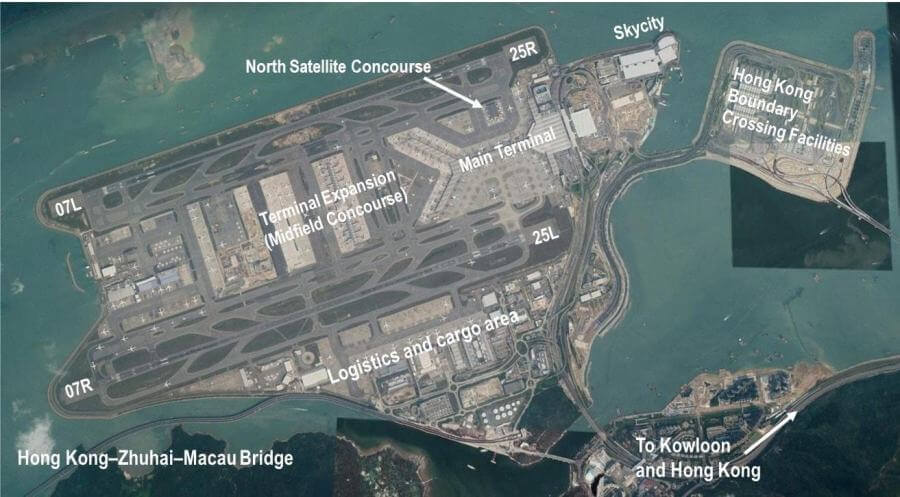
The main buildings of the airport
The Hong Kong International Airport covers an area of 3089 acres / 12.5 km². There are 90 gates in the airport. There are 2 terminals.
Terminal 1
Terminal 1 of Hong Kong International Airport opened on July 6, 1998. With an area of 570,000 square meters (6,100,000 square feet), the terminal is one of the largest passenger terminals in the world.
Terminal 1 is connected to the North Satellite Hall (NSC) via SkyBridge and is expected to open in 2020.
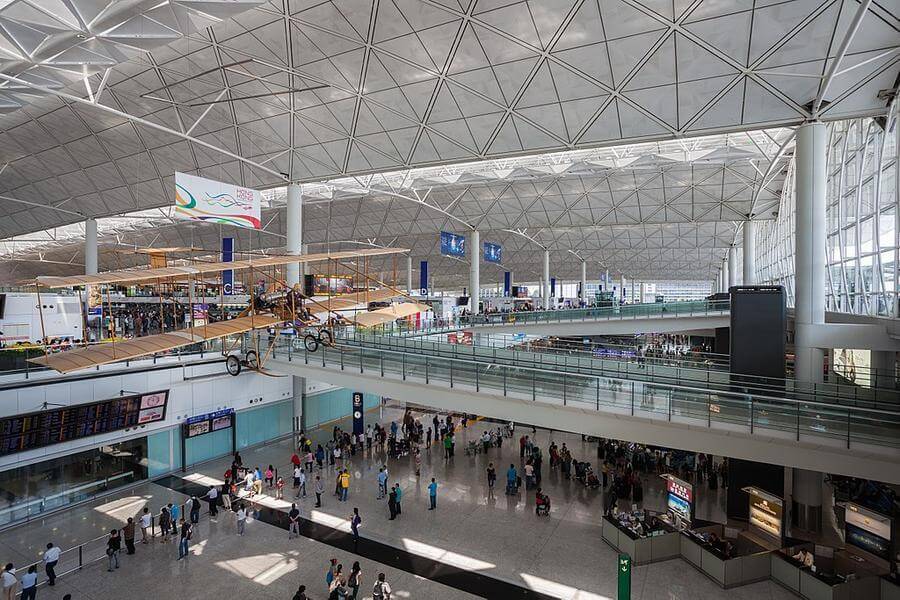
Terminal 2
The terminal 2 has an area of 140,000 m 2 (1,500,000 square feet). Together with SkyPlaza, it opened on February 28, 2007 with the opening of the airport station’s platform 3.
SkyPlaza is located in Terminal 2. Terminal 2 was closed in November 2019 for expansion to provide take-off and landing facilities for the new satellite terminal of the three-runway system.
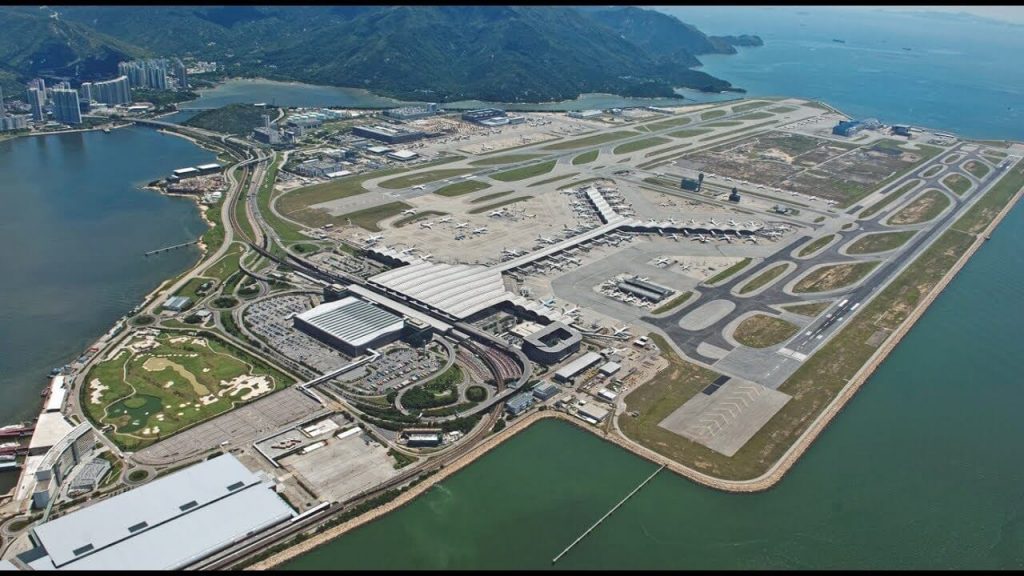
North Satellite Concourse
In 2007, Hong Kong International Airport began construction of a two-story North Satellite Concourse (NSC), which opened in December 2009.
The hall has a construction area of 20,000 square meters (220,000 square feet) and can accommodate more than 5 million passengers each year. There is a shuttle service between NSC and Terminal 1 every four minutes.
The new SkyBridge connecting Terminal 1 and NSC is expected to be put into use in 2020, and then passengers will walk to NSC, saving time on the airport shuttle bus.
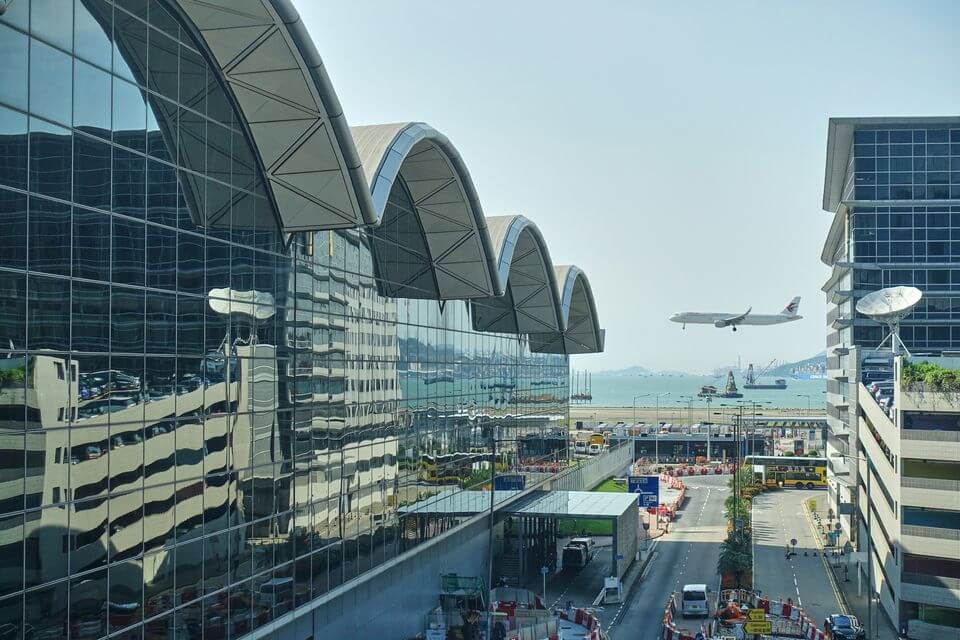
Midfield Concourse
On March 31, 2016, Midfield Concourse was officially opened. Midfield Concourse is located on the west side of Terminal 1, between the two existing runways. This is the last piece of land available for large-scale development on the airport island.
Including 20 aircraft parking racks, three of which are wide enough to serve the Airbus A380 and can accommodate an additional 10 million passengers each year. Passengers arrive at the lobby through an extension of the underground moving walkway.
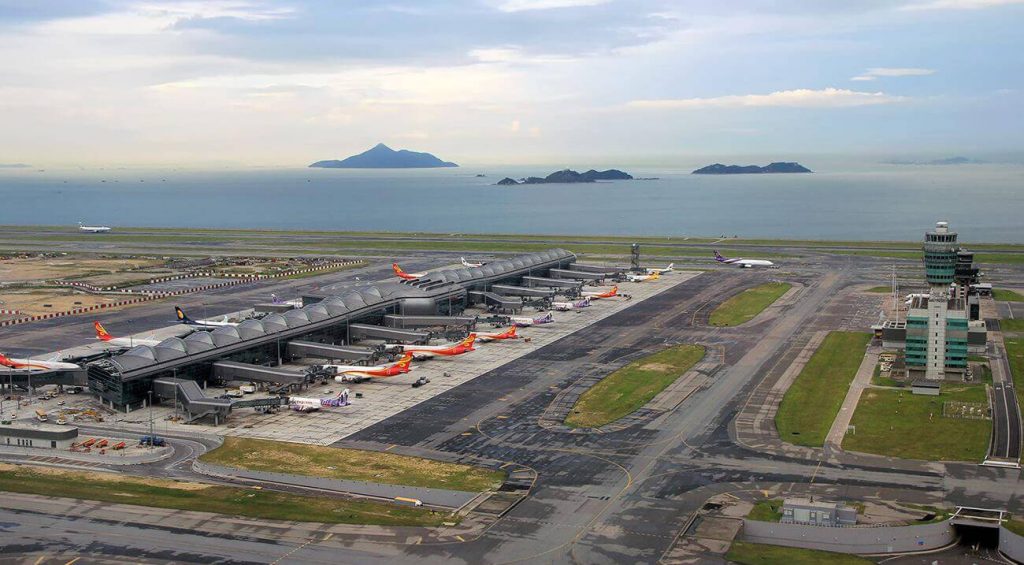
Hong Kong International Airport Data
- Country
- China
- Region
- East Asia
- Status
- In use
- Official name
- 香港国际机场
- Location
- Chek Lap Kok, Lantau Island, New Territories, Hong Kong
- Owner
- Airport Authority Hong Kong (HKSAR Government)
- Official website
- hongkongairport.com
- Operator
- Airport Authority Hong Kong
- Began
- Dec-21, 1993
- Opened
- Jul-06, 1998
- Airport type
- Public
- Airport code
- IATA: HKGICAO: VHHH
- Airport area
- 3089 acres / 12.5 km²
- Runway length
- 2*3,800 m
- Passenger traffic
- 71.5 million(2019)
- Freight volume
- 4,810,854 tons (2019)
- Takeoffs and landings
- 420,000 sorties
View Hong Kong International Airport on Google Satellite Map
Google satellite maps allow you to see building details more clearly, including natural landscapes such as mountains, rivers, deserts, sea and man-made engineering buildings.
If you are very interested in this engineering building, it is a good idea to click below Google Map icon. We will help you jump to the corresponding location of this building or engineering on Google satellite map.
View Hong Kong International Airport on 720yun
720yun is a panoramic image service provider, where you can see the panoramic image of the Engineering Building, let you know more about the Engineering Building.






























































